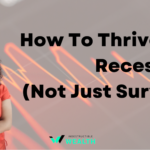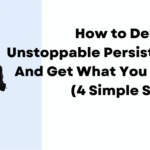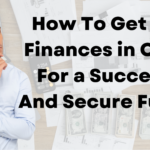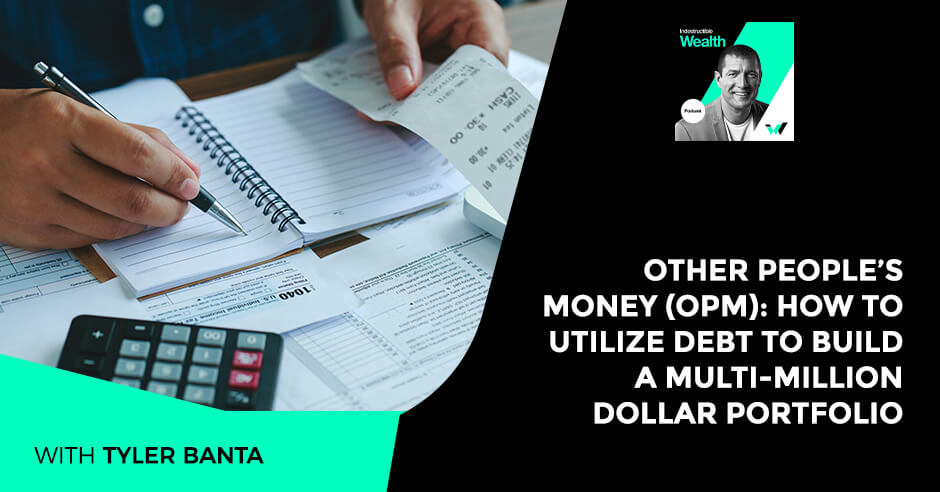
What could be better than other peoples’ money? In this episode of Indestructible Wealth, Jack Gibson and Tyler Banta talk more about the debt that can build wealth, and the debt that can destroy your wealth. Tune in for a hopeful and intriguing example in which a single mother turned her family’s financial woes into a stable financial future.
—
Listen to the podcast here
Other People’s Money (OPM): How To Utilize Debt To Build A Multi-Million Dollar Portfolio With Tyler Banta
We are incredibly fortunate to have a hugely successful real estate investor, debt strategist, and tax reduction expert. Tyler Banta is our guest for this episode. Tyler is the Founder of multiple companies inside the real estate and wealth creation space and has his own multimillion-dollar portfolio. I consider him an expert. After doing multiple deals with him over the past years, I have grown a high level of trust. He will do what he says he will do, and that’s rare to find in the business world.
Tyler joins us on the show to speak about his early career start in the financial services industry and how that experience opened his eyes that Wall Street was not in the business of putting their clients first. He has a unique strategy on how to help investors create cashflow by utilizing what he calls lazy assets, OPM, and cashflow in real estate, all working together in a synergistic plan. He’s helped his clients convert huge amounts of non-performing assets into cashflow and financial freedom. Tyler is here to talk to you about how to create indestructible wealth. This is one you don’t want to miss.
—
I’ve got my special guest, Tyler Banta, on the show. Thank you for joining us, Tyler.
Thanks for having me in.
It’s great to have you. You are the master of a lot of different ways of investing and programs that help investors. We are going to focus a lot on diving into debt. Why don’t we start with a foundation of how you get started in business? What’s your background? Tell us how you’ve arrived at where you are at.
For those of you out there that sometimes are looking for a pathway or process to understand how to get started in building your business or maybe it’s building personal wealth. One of the things that were interesting to me was when I was about sixteen years old, I had a little bit of money saved up, and I found out I couldn’t get a loan.
At sixteen, you don’t have reportable income. The income or whatever money you made was a crapshoot. It was from the Hollywood/film industry and music industry. I got lucky and made a little bit of cash. It was a pretty substantial amount of cash but all I wanted to do was buy real estate. My mom was the one that helped me out.
She was the one that got me my first loan. You got to love your mom. A lot of people go, “That’s a silver spoon hand.” I was at 9.8% loan. I don’t see anything with a silver spoon on that one. If you take nowadays’s interest rate environments and compare that, you are sitting there growing like, “There are many opportunities out there.” What I learned was if there is a way you can make an asset more valuable, and a lot of people refer to the reference BRRRR Build, Rehab, Refi, and Rent. That’s a great idea and concept, and it does work.
If there is a way you can make an asset more valuable, BRRR (build, rehab, refi, and rent) is a great idea and concept, and it does work. Share on XWhen you find value in something, and you can take it to the next level without having to depend on anybody else, and you could control your wealth, that was something that I found was a foundational component to how I started building assets and building a long-term plan for myself versus something that’s an overnight throw a dart at the wall, hopefully, it sticks, and make a lot of money.
I realized I got two fashions of investment when I bought this property. I got to rent and built equity. I took a 2-bedroom and 1-bath house. That was about 1,400 square feet, and I turned it into a 3-bedroom and 2-bath house. It didn’t cost me a lot because I started as the living tenant in the beginning. I was able to take my time to rehab it and do it myself. For those of us who don’t have time, look for somebody that can help you. Look for somebody that can be that contracting partner. Don’t try to be a fix-and-flip guy like on tv. The DIY stuff you see and the HDTV are all ridiculously fucking hard.
That is all about Hollywood and smoke mirrors.
Most of those guys are buying a wholesale property from one of our channels to get their deal for the tv. In 2005, we sold 35 houses to put this house when it first came out.
Numbers on those that show, do you feel like they are fluffed up?
They are real because what happens is bird dogs are out there looking for properties for guys because they want to get noticed. The next ten investors are calling them like, “You got so and so on the TV show an investor property. How about you get me some? I will pay you a little bit better.” It’s almost like a marketing plan where, “I’m going to make $5,000 on this house that has $250,000 of profit in it.”
It’s the best house I’ve found in five years but I’m going to go after it and now basically take the loss and not absorb the $150,000, and hopefully, 50 other guys will come after me. That is what happened to a lot of guys during that era. That’s my background. I essentially got started looking at real estate, wanted to explore, and then quickly realized I was an entrepreneur.
I didn’t want to work for anybody. I was a probation officer for about five years and worked in the juvenile system. I saw how sad it was. I was like, “My goal there was to teach and educate these kids, not only athletics and sports, because I feel that’s a foundation for every kid. It brings that comradery together.” It does. If you are good, you are good. If you could play, you could play, and people respect you for it because it’s fun. Investing and education need to be fun. What makes it fun is when it’s relative to money.
When you know, there’s that green cash at the end of the table and that reward for all the hard work you put into it, that’s what makes it fun. When I left the system and went out on my own, I ran into a couple. One of my business partners, Lorraine. She gave me a shot and said, “We need help.” I got into the financial planning industry and quickly realized there was something wrong with this.
What do you mean? What was wrong?
2008 had hit. I’m looking at clients’ accounts and am brand new in the business. You got to make phone calls to clients. You got to sit here and say, “Hang on. It’s coming back.” In a sense, I’m thinking to myself like, “I bought three rental properties at this point.” Every one of my rental properties is still paying. I’m sitting here telling this guy on the phone who’s lost $400,000 of his account.
“You have to hang on.” He says to me, “I don’t have much time to hang on. I need to retire in six months.” That was a reality check for me. You don’t know what your time is. You don’t know when you are sick or you feel that you went out of the W-2 you are working for, even if you want to sell your company. That was the one where I said, “It has got to be a better way to do this.” That’s where I got to now. I said, “I don’t want to be a financial planner anymore. I want to start focusing on real estate and on how entrepreneurs and customers can keep what they work hard for. I want to educate them on taxes, how lending works, and how to propel their business or themselves to the next level.”
That’s where OPM strategies became a humongous component of what I was doing from the age of sixteen, which it’s not a new strategy. It’s an old strategy but it has been perfected as the years have gone on and people have been innovative that grabbed hold of it and gravitated towards utilizing debt to become rich.
OPM is Other People’s Money. There are a lot of the gurus out there that say, “Pay off all debt. Debt is bad. Debt is evil.” A lot of people’s focus is on getting their debt paid down. What’s your philosophy on debt? What’s the difference between good and bad debt?
I look at any company, and they don’t start from thin air. They owe somebody a personal loan or bank loan. They have a concept. It’s an equity partner. They gave away a percentage of what it could be. At some point, it’s all a form of debt. To answer your question about good debt and bad debt, if you understand how to utilize it and you don’t treat it with this emotional direction where you are high on the hog of watching what’s on TV, and you are trying to buy things that you shouldn’t be buying, debt could be the most powerful tool because it all of a sudden gives you access to capital.
When building a new business, any kind of business or brand having access to capital is key. I don’t know how many companies had cash crunch hits at any time, and they came back and said, “We got to do a capital call. We got to do a stock raise. We got to issue stock to bring in cashflow.” When you look at that, you say those are all some form of debt.
Good and bad debt usually starts with credit cards. Clients go out or customers, I should say or the consumer runs out, and the first thing they typically get into is student loan debt, car debt, and credit cards. Those are your first three that rack up. Credit cards are the one that kills you because the APRs are usually very favorable to the banks.
It’s 18% or 20% of them a lot of times.
In the last three days, I probably have had 40 pieces of junk bell credit card offers come through the mail for my wife or myself. One of them was 39%. You are sitting here going, “That’s someone taking a shot ad. Do you want access to capital on how badly do you want it?” You are sitting there going like, “Yes.” That idea and concept of daily cost interest, that interest that you are literally operating off of, is not taught to us in school. When we go through high school in junior high, we learn basic arithmetics.
We need to learn more about debt and the different types of loans that are out there to us and how they operate so that we are knowledgeable of how to consume these products and tools because they are tools. When you ask the question, good debt or bad debt, if you can flip your debt into being tax deductible, that’s the key. That’s where I found money was hidden or I was going to say not being maximized, is you have a consumer credit card, and you have the ability to say, “Throw your debt on your property.”

Leveraging Debt: If you can flip your debt into tax-deductible, that’s the key.
A lot of people will start to consume auto loans, credit cards, maybe sofa loans, furniture or even jewelry. They have the ability sometimes to put it on their primary residence. Your primary residence offers you a tax deduction and is an asset that grows. It’s tied to something that creates value. Consumer debt of a credit card versus a piece of property is a massive difference between good debt and bad debt. Good debt is the house. Bad debt is the credit card.
If we are trying to build wealth, we want to be eliminating bad debt, credit cards, high-interest type stuff, and consumer debt. We want to be embracing good debt but understanding how it works. Am I reading you right here? Understanding the different products and things that are available to us because debt, in the hands of an intelligent investor, is a very good thing. It’s a wealth-building tool. Whereas debt in the hands of somebody that doesn’t know how to utilize that tool could be a very detrimental thing for them and dangerous.
It makes them destructible, not indestructible.
We didn’t start this show to create destructible wealth.
I want people to rise to the top. You bring up an amazing point. I like to use scenarios of customers that have come through the systems. OPM is probably the easiest system that anybody could start with. I’m going to use a credit card to how people build wealth. The customer remains anonymous but the scenario was a single mother making about $36,000 a year and living in the California area. That’s hard to do. Meaning, how do you get by? Two children, junior high and high school, both needed braces because if not, they go to school and probably get poked at. They did not have that pretty smile that they would like.
The things that we all worry about when we are young kids that don’t matter when we get older. When we saw her file come through the system, it was odd that there was a single mom. She lived at home with her mother to get by with her two kids, making $36,000 a year and working a 45-hour-a-week job. There wasn’t a lot of time for her to build wealth, understand or even grasp knowledge. It shows like this is where we can help people.
Luckily, she had an uncle that referred her to our system that had amazing success, and that was what drove her to start following the process. She had an auto loan. She had good credit. That was important. She had taken care of her credit. They had braces of about $12,000, and the payments were killing her. There was no extra money at the end of the day, and we call that cashflow. Where was her cashflow at? She was sitting there like, “What do I do?” We did a consolidation. A lot of people want to know like, “What are better ways out there to do this?”
We utilized what’s called a PLOC or Personal Line of Credit. We got her a $20,000 PLOC. She had a $16,000 auto loan and $12,000 of braces. We consolidated what we put into the PLOC, and then we took all of her cashflow and tied the PLOC to her personal checking account, and then she was able to suppress the debt every minute.
Before you knew it, she was saving interest daily because her paycheck was sitting on that PLOC. The difference between this PLOC and a credit card is that the PLOCs used to be revolving daily as your checking account. You can use it daily, and all of a sudden have access to it every minute. She could still eat through normal things, pump gas, and all the things that she needed to get her kids to and from school and live their daily lives but she was saving money versus having her money sit in the bank account, doing nothing for her. Every day, it did nothing for her. It got deposited.
Her bills aren’t ready to be paid on day one when your paycheck comes in. They are due on the 5th, 10th, 15th, 18th or whatever. In OPM, we strategize on the actual date bills are due. They usually give you a grace period. Every day matters. In this scenario, what we look at is that she was able to consolidate the braces and the majority of the car loan into this PLOC. It’s an annual interest rate. Instead of having a high monthly payment of an amortized loan on the braces and car, she now had an interest only payment on the PLOC that she could control the debt based on her cashflow. Within eight months, she had paid everything off.
Now we went back to the bank and said, “We want to up our PLOC. Look at what a good customer we are.” Now, this gal has one asset, which is a car, which is a depreciating asset. Other than that, she owns no home. She owns nothing. No retirement plan at work. She now turns around and says, “I need to up this PLOC.” She now has access to $40,000 out of nothing and out of a credit score. That $40,000, all of a sudden, allowed her to purchase a rental property for $100,000.
Did her credit score go off through this process?
She was averaging about an 805 score because she was constantly working on her credit score daily. When you use your line of credit correctly and are working out of it in and out, it shows the banks that you know how to manage and maintain debt.
When you use your line of credit correctly, and you're working in and out of it, it shows the banks that you know how to manage and maintain debt. Share on XWhat was your credit score before?
It’s about 720 or 740. That’s how she got the $40,000 PLOC. If she weren’t over 780, she would’ve got it. It’s that little difference in the system of knowing, “Where do I get more money, and how do I gain?” No one teaches us how to understand our credit score or how to get the PLOC. It’s different from saying, “I want a credit card.” These are completely two different types of debt. Before you know it she took $20,000 out of her line, put it in her bank account, let it sit there, and got seasoned for 60 days. Now that becomes “savings.”That’s a loophole in the lane institution. That’s not taught to us because you are not supposed to buy debt with debt.
She was able to buy a piece of property, 20% down, which created rent. Here’s a gal that makes $3,000 a month, and this property that she’s putting 20% down on makes $1,000 to $1,200 a month. It pretty much eliminated her tax liability. That was all done through good debt to bad debt. Now she’s got deductions, a process, and a system. She pays that off. She turned that into a line of credit as well. She’s probably looking at buying her first primary residence. That’s a quick scenario of good debt and bad debt that changed and was an education process for someone.
The two types of readers that I have on my show are the young, hungry entrepreneur that’s getting started in the business. Maybe they are just getting and going or are a few years in. They’ve saved up a bit of cash, and then I got the investor that has resources. Maybe they are in their 40s or 50s. They’ve got a few hundred grand, 401(k) or property or two. We see a lot of these types of investors that come through the CashFlow+ program.
Let’s talk first to the younger group. Let’s go back in time and talk to Young Jack. The 22-year-old hustling Jack saved up $50,000 in college and didn’t buy anything. He begged for everything he made and was hustling. What advice do you have for that type of younger investor that’s getting and going? What should they be thinking about in building their wealth long-term?
One thing that is funny to me is that the banks look at young kids as obviously a liability. They see you coming in, and they go, “You change your mind as the wind blows.” What is powerful is that you are earning money, so at that time, we should be taking classes on how to maximize our taxes. If we understood bookkeeping and taxes going into business, let’s say, fresh out of college or even in high school is where it should start. You are that much smarter as to how you earn and take your money. We are young. The first thing he says is, “Just fucking pay me. That’s all I want.” It’s that simple.
You are sitting there and going, “How can I make more scratch, cash or whatever it is.” What we don’t understand is that you have to put a value to it. Antoine Walker has a great basic financial education platform for his foundation, and it’s called The 8 Foundation. Here’s a guy that made $200 million plus over his career. He was probably at the top of the game selling jerseys and shoes at his time. He pretty much didn’t understand money because he left high school, went to Kentucky for one year, and was out.
It was a pathway or a passage. I feel like had you like learned a little bit about the power of money at the age of high school? People will be that much smarter about how they take their money in and realize, “If I earn $100, I need to put $10 or $15 aside because I owe taxes.” That’s where a lot of us that are young get behind. I even got behind. You are trying to do much at one time, trying to gather much capital as possible as fast as you can.
You don’t understand how it should be allocated. You can’t use 100% of that loaf of bread. You have to say, “I need to slice off a couple of this here. Put a little bit away for a rainy day. I need to look over here and say, ‘Is there something else on how this money can work? Do I need to pay something forward?’” or as I like to say, “Pay myself.” You got to pay yourself first. When you bring that money in, when we are the young Jack and saying, “How do I get more now? I get $50,000 but why don’t I have $200,000?” It’s the first thing that goes to your mind. It goes back to the tax return. If you save too much on your taxes, what don’t you qualify for?
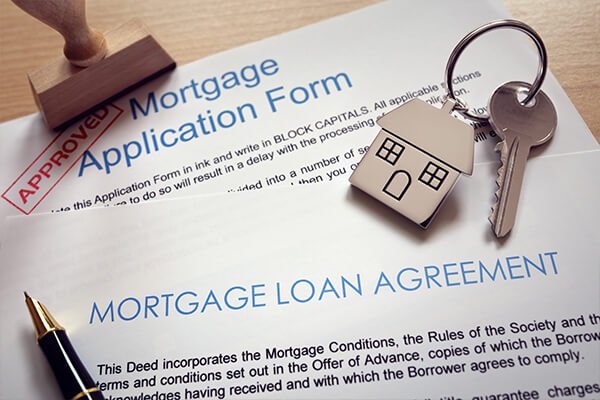
Leveraging Debt: What don’t you qualify for if you save too much on your taxes? You can’t get a mortgage. You can’t even get a loan.
You can’t get a mortgage.
You can’t even get a loan.
You can’t get anything.
You can’t get a PLOC. You walk in there and be like, “Give me a $40,000 line of credit. I can go turn that into $100,000.” That’s not the way it works, unfortunately. They want to see reportable income. A lot of us out there are young. What are we doing? We are taking bartending jobs. We are strippers or whatever it may be with working cashflow jobs.
If we were working the bars and nightclubs, what are we getting paid? We are making $300 or $400 a night, sometimes in cash, and none of it is reportable. I can’t maximize 10X my money. That’s the point of what I was giving at the young Jack need to understand how to 10X his money. If I can go out and show that I’m making $100,000 and put $3,000 down on a $150,000 property because I can use my FHA loan, that’s the power of OPM.
You turn that $3,000 or $5,000 into an asset that you control and own for very little money and sometimes no money at all. For those of you who are VA vets out there, you can use the USDA loans if you are in a USDA area. We are not taught that. The problem with society is that people are going around spending every paycheck and every dime. Entrepreneurs, that are out there, the key is how do I get more capital to align myself with the banks? Number two, you need to know the right bank to work with. All the fucking mainstream banks suck.
They are awful.
They are terrible.
Do you ever go through the loan process? They asked me for a $450 homeowner’s association invoice when I have a multimillion-dollar portfolio. They needed to see that. I had a list of 30 things I had to give them. It was always a terrible experience.
If you think about it, you are probably refinancing to go from 4 to 2.75.
I was doing a cash-out refinance. I already owned the asset, which was worth a couple hundred thousand. I didn’t have to go through all that.
The funny part is that you have to align yourself with a banking system that fits who you are and what you are trying to do. I have a great colleague, associate, and friend. He had his own financial planning firm. We used to be financial advisors years ago. I do know the financial industry very well. I got rid of my firm because I didn’t believe it anymore. We had problems for no reason.
When you look at it, I helped him align himself with a business bank. When he was trying to build his practice to acquire other assets to build his financial planning book, I took him right into a business bank and told him how to understand the difference between an S corp and his personal taxes because he consolidated everything.
People don’t know the power of two different pieces of paper. The tax return for your corporation is not the tax return for your personal. It’s completely separate qualifications and tools that can get loans. I took him to a business bank, and he got a $180,000 line of credit within two weeks of the corporate return. There were no assets there. It was just revenue, which allowed him to buy a smaller financial planner route so that he could double his book size.
That created residual for him. He went from a $600,000 revenue business to all of a sudden overnight about $1.1 million. It was all off of a small line of credit that allowed him to free up capital in his bank account real quick that he can then use and maximize and keep growing because now, when he pays that back-off, it can up his line. He’s got access to more capital, “Go do it again or maybe buy something different.” He diversifies his business model. The young Jack needed to understand banking and taxes to start because sometimes we think we are outsmarting the system. We think, “If I don’t report this cash, I’m outsmarting the system,” but if you don’t report the cash that you earn, you are not 10Xing your money.
You are saying I needed to understand how to do the tax code much more effectively. I needed to learn how to acquire good quality debt and then take those two concepts and go out and buy cashflow-producing rental properties.
Maybe businesses. A lot of people are doing dream drop shipping with Amazon or they are doing side hustle ideas that are out there. One that I always found fascinating was ATMs. I had met a lady that had a banging business out of a mammoth one time. She owned 40 ATMs. She would only fill each ATM with about anywhere from $5,000 to $7,000. It’s not a lot of money but she would make 30% of her money.
These things were printing cash for her over again. She had it all set up within about a 20-mile radius. Her day was going to check her on the ATMs. She could hammer it out, and then before you know it, she had her nephew doing it with her. It started expanding, and before you knew it, she was making $4,000 or $500,000 a year off ATMs.
If you think about, “How hard is that? That’s truly passive. You are sitting there, and it’s working for you.” You got to go set it up. I know there are several other little business ideas out there. If you are trying to get into something, there are many franchises out there that you can buy into that are tiny little franchises. They are easy ways to create the first little business that can become successful and allow you to do what you want to do. Rental properties, though, are usually the easiest way and probably the simplest thing most of us understand. We always grow up with our parents’ properties.
If you are trying to get into something, there are easy ways to create your first business that can become successful and allow you to do what you want. Rental properties are usually the easiest way and probably the simplest thing most of us understand. Share on XMost of our parents tried a couple of rental properties, and they were like, “Why if they fail? Why if they didn’t like it?” That’s typical because we are not cut out to be real estate investors all the time as an individual. Nowadays, common knowledge is turnkey. If you can partner with a good turnkey provider and they’ve built the property management firm, that’s everything. The property management team, contractors, and the contractor is the hardest part of all of it because that’s babysitting glorified. You glorified babysitter chasing people and still expecting the right checks.
For me personally, real estate contractors cost me the most money when I first started out. That’s why most of the losses were from shatty work from contractors that I thought I could trust but it turns out I couldn’t.
I got a text message, “The roof is leaking.” “Which address?” I said, “I just sent a guy to fixed two weeks ago.” He told me, “The whole roof.” It was a light rain. I’m thinking, “If you have a deep rain, I got to get over there.” I sit there going, “No way.” That’s exactly right. You don’t know if you are there to not track every single minute what’s good contracting and bad contracting. Is it going to be a short-term or long-term problem?
What about the guy who has resources and he’s trying to figure out how to maximize cashflow? He’s not happy with the performance of his 401(k). He’s frustrated that he makes a good income but it’s not enough. That’s typically the scenario.
There are three things that we see. They make good income and don’t know how to replace it. They are like, “I want to keep living this lifestyle when I’m retired. I don’t want to be on a fixed income.” Most people immediately think to themselves, “I got to go on social security, and whatever I got left over, that’s all I get.” Number two, they come in and don’t know that their assets can perform and produce cashflow right now. You don’t know what you don’t know. They have been told and shown like the banking industry, “Buy a 30-year fixed loan.” That’s not the best loan for us.
The best loan, a lot of times, is interest on a loan. Something that’s revolving is that we have access to capital because having access to capital is how you grow your willpower. Not anybody else’s but yours. The third problem that a lot of people want to do is they want to pass the buck off, stick their heads in the sand and have the ostrich effect. I’m going to throw my money at something. It sounds great. It sounds like I can get rich and want to be part of that rich, wealthy group. I’m going to be standing there having my cocktail, relaxing on a paradise beach.
That’s not how money works. If it started from a foundational aspect, people would understand the power of debt. They know how to pay their houses and their assets off, and have free and clear assets or a way to manage their debt in retirement and create a lot of passive cashflow before they walk away from the W-2.
We are taught to save. Hopefully, it’s there. It was the same conversation I had with the gentleman that said, “I got six months. What are you going to do about the $400,000.” I wanted to stick my head in the sand because I was brand new in the industry and said, “Do you see the grain? It’s fine white sand over here.” You are sitting there like, “In six months, make $400,000.” I’m like, “Maybe if you had $6 million that was invested, then we can make $4 million in about six months. No problem.” That was a very big ask but also, you got to look at who’s the blame in that scenario.
He wanted all risky stocks because the market was on fire at that point. I didn’t understand the objection of saying, “Whose fault is here.” One of the big things I like to say is when you are creating financial independence, you are looking for that way out of that W-2 or to sell your business, plan ahead and take control of your finances so that it’s a systematic process to build wealth. Don’t try to buy the oil stocks and the stocks that you don’t control.
Don’t try to buy real estate with a bunch of other people that you don’t know what the hell is going on. Try to get into stuff that you directly own, and you can physically see and can control it until you hit your first goal. When your first goal is to replace that W-2, your wife’s W-2 or your spouse’s W-2, that’s a goal. Get that cashflow coming in now. Throwing money in a 401(k) is not the answer. It’s a park and pre-method.

Leveraging Debt: Don’t try to buy real estate with other people that you don’t know what is going on. Try to get into something you directly own, physically see, and control until you hit your first goal.
It can take 40 years before you have enough to do what you are doing.
When you retire, are there income-producing assets that are in the 401(k) that could provide you the same equivalent?
You have to start drawing down and spending the principal that’s in there, so then your money could run out.
Wall Street publishes, “You should only be taking about 1.8 % to 2.2% out of your retirement accounts.” If you had a $100,000 need to live on, that means you would need somewhere north of $2.2 million to pay tax because we got factor tax again. Let’s go back to the sliced bread. I need to have $100,000 to live on to cover my nut and be comfortable. Otherwise, I’m upside down and drawing the principle because the minute you keep drawing that lifestyle and the market tanks, you are drawn from a lower balance. That means the performance has to be higher. That means you are set up for a disaster and not set up to have Indestructible Wealth.
It’s a foundational footprint that keeps providing cashflow. We don’t look at cashflow assets enough. We look at returns, ROI, or ROE or Return on Equity. We look at all of these cash-on-cash and return cap rates. Look at what it does for your scenario with your cashflow, get tax, how much interest it saves you and how much cashflow you get those three key components. That’s how you can build the type of wealth you are talking about and the way your show promotes for clients. They don’t have to take a lot of risks. They can get double-digit returns if they understand those three key components and can focus on that with their money.
You painted the picture. What programs can create solutions like this do you offer that can help people create this cashflow indestructible wealth?
There are 1,000 programs out there. The first thing that I always say is, “Build the right team.” That’s a program. Whether you are a person that loves to work in your backyard or are tired of working in your backyard because you have tried all kinds of old processes, then you need to sit here and say, “What’s the next thing that I can do to build myself?” You need to first start with a footprint of a team.
That team should consist of the most important people, which are tax, a great lender or someone that can get you in front of the banking systems, and then the last is someone that understands strategy and could help you learn how to maneuver the entire component. It’s like, “How do you pull it all together?” The program that we started is called CashFlow+. It is a very simple systematic process that allows people to come in and get a footprint of how they should build their plan.
It’s educational. It’s not financial planning, and it allows them to take control of their money. They know what they are buying and getting. They can visit it. There are a lot of other solutions out there, and I like to use the phrase all the time, “You don’t know what you don’t know.” If you try to piecemeal that together where the team is not working together as a unified front, you are typically going to have a ton of problems down the road.
You were saying if you try to piece mail it in terms of, “I’m going to go to this person to do my taxes. I’m going to go to a whole different firm or person to try to buy properties from. I’m going to go to this different bank to get my loans,” and all of them aren’t talking to each other. If none of them are working together, then you have potential problems with that scenario.
Maybe it works 1, 2 or 3 times. If you are building indestructible long-term systematic wealth, you got to be able to do it over and over again. Think of any business. It’s systematic. Why can’t you treat your finances like that? You have a couple of businesses, Jack. Think about it. What makes each of those work? The process is set up, the operation runs, and the product is delivered the same way or with tweaks based on what your consumers are asking for.
It’s the same exact thing. If we, as consumers, are asking for our money to produce cashflow for us, then why are we not focusing on that? Why are we going to throw our money out of a growth asset or non-taxable asset? Everybody says, “I don’t want to pay tax,” but if your team is not talking to each other, you are never going to be in the right direction.
You are going to be half-ass the entire time. They sound smart. They will tell you, “I will talk to the other guy for you.” There goes a bill coming your way. Be prepared. The second component is my favorite question is to ask your tax advisor how many pieces of property they bought. How many investments are they doing now? What are they doing with their cash? Ask your lender, “What type of loan do you utilize?”
See every loan out there. No demand. They are shopping the rates for you. They are doing whatever they can because why? They can sell you another loan down the road and see this. Why not let the industry professional that’s licensed that did all the work give you the right formula? Most of us want to follow what’s on the TV or posted in the banks. Think why it’s posted. If you are a business owner, why do you post certain ads in certain offerings? That’s why we buy 30 or fixed loans, stocks, and X.
They are pushing you towards the things that they can generate the biggest fees from.
It’s a little time value money. They are in business to make money. We are not in business to sit there.
Last question, what’s the question that I should ask you but didn’t?
You told me you like to preach safety. Know what you want as an investor, where you want to go, and where you want to be. The numbers don’t lie. Run the numbers and make sure, “I can get there.” There are always a variable and a loss factor. What’s your worst-case scenario? If you go into every investment or every partnership knowing how to exit, how to leave the investment, and what you walk away with in a worst-case scenario, you will always be in a safe position.
Know what you want as an investor. Know where you want to go and where you want to be. The numbers don't lie. Run the numbers and make sure you can get there. Share on XThe best attitude they have is that nothing is perfect. For those people not there that hired their financial advisor and they think, “This guy is doing a great job and he’s not,” don’t blame him. Blame yourself because you didn’t know. You didn’t educate. You didn’t look at what’s available to you and say, “Could I be doing more?” That would be my safety-first crossing-guard advice to this financial industry.
If people would like to work with you and work with an integrated system and processes where all the teams are already talking to each other, what do they need to do to be able to access your knowledge, wisdom, and this whole team of people?
We have an awesome system set up. We have a great network. It is relatively new because we had to pull it all together after years of learning what was good and what was wrong. There are several channels where they can enter into Cashflow+. That would then drive them to the first steps typically. We always start with our OPM strategy because this is the core of having access to capital. Once you have access to capital, you could triple or 10X your money and grow to the next level.
Thank you much for all your wisdom. Readers, we hit the tip of the iceberg by tapping into Tyler’s knowledge and experience. You can plan that we will have him back on the show. I’m sure that talk about tax strategies and lazy assets in another episode. Thank you much for being here, everybody. That’s a wrap with the Indestructible Wealth show. We will see on the next episode.


